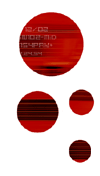

 |
 |
scientific program electroacoustic musics around set theory music analysis tools musicnetwork workshop professional week ircam forum workshops free software for music international multichannel sound forum performing arts and technologies dance and new technologies access to sound heritage thematic evenings demonstration stands artistic program set theory concert music in creation concert cursus concerts opera "one" sound installations open house weekend technologies gallery conferences demonstrations workshop-performances workshops and films ircam laboratories linux install-party concert distribution on internet associated events resonances night at glaz'art émilie simon at la cigale suguru goto reseaunances guided tours of ircam and the multimedia library resonances in pictures resonances 2002 
|
ANDREW MEADMilton Babbitt, Set Theory and Twelve-Tone CompositionAbstractIn certain theoretical circles, pitch-class set theory and twelve-tone theory are considered distinct disciplines. However, from the very beginning of his compositional career, Milton Babbitt has demonstrated both in his music and his writings that twelve-tone composition, as he practices it and as he examines it in the works of Schoenberg, Webern and Stravinsky, is grounded on and revealing of the range of properties and relationships to be found among unordered collections in the total chromatic. The presentation traces the arc of Babbitt's compositional practice from its roots in Schoenberg's hexachordal combinatoriality and Webern's trichordally derived rows through trichordal arrays and all-partition arrays to the use of super-arrays, with particular attention to their implications for set theory. The various stages of his development will be illustrated with analytical vignettes, including portions of the two piano works, Partitions and Post-Partitions. A technique for comparing collectional structures employing a non-interval-preserving pitch-class operator will be introduced in order to illustrate the deep-structural similarities amongst certain compositional constructions, while revealing their individual differences. This will be illustrated with examples from the trichordal arrays of a number of works from the 1950's. |
|||||||||||||||||||||||||||||||
 |
Organization Committee Copyright Ircam-Centre Pompidou 2003 |